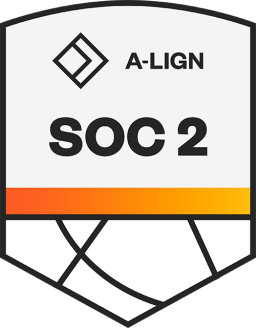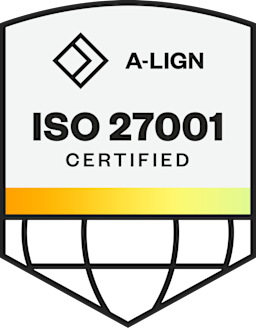We are firmly in the age of customer experience (CX). Customers' priorities are shifting, with experiences now taking precedence over other criteria for many customers. According to Gartner, CX drives over two-thirds of customer loyalty, more than 'brand' and 'price' combined. In a CX-driven world, closed-loop feedback is crucial in helping brands deliver the experiences customers crave today.
What is closed-loop feedback?
Closed-loop feedback is when you respond to your customers' feedback to further understand your customers' experiences from their point-of-view, help elevate their experiences today, and obtain insights to inform your long-term customer experience strategies.
Successful closed-loop feedback systems help you:
Alert customer service staff as to how they can improve CX at key moments in the customer journey.
Help CX teams identify root causes of friction in the existing CX design to help elevate customer success.
Provide insights for internal stakeholders to help drive overall CX design.
"Most people do not listen with the intent to understand; they listen with the intent to reply." - Stephen R. Covey
It's a two-pronged approach to which Bain & Company refers as the "inner" and "outer" circles:
The inner circle focuses on "training employees" to deliver excellent experiences.
The outer circle focuses on "implementing structural improvements" based on the insights gathered when closing the inner loop.
Listening to your customers throughout the customer journey is a must for any company. Acting on their feedback is where its true value is found.
Why is it important to close the customer feedback loop? 4 key reasons
1. The costs associated with not closing the loop are high
Resolving customers' issues quickly and efficiently has never been more critical. 32% of customers stop doing business with a brand they love after a single bad experience, according to research by PwC.
No company will ever offer every customer amazing experiences 100% of the time. A poor experience could translate to losing this customer's business. Not to mention, any potential revenue from those they might have otherwise referred. One study by Accenture Strategy found that US brands lose approximately $1.6T every year due to poor customer service.
Closing the loop on a customer's feedback can help pinpoint the key drivers of these poor experiences. Most importantly, it can help uncover how to address these pain points to turn a bad experience into a positive one for this customer.
2. Your customers' expectations keep growing
No organization will ever 'master' the customer experience. Customers' ever-growing expectations will always prevail. Plus, what works one day may not work the next. Closing the feedback loop can reveal how these expectations vary across the customer journey and address any shortcomings immediately following an experience.
Closing the loop can go a long way towards making customers feel valued. When customers provide feedback through one of your surveys, they volunteer their time to let you know about their experiences with you. In exchange for their time, closed-loop systems can help your agents quickly address where the brand fell short of their expectations during a given experience.
Closed-loop feedback provides customers with the opportunity to be heard by a real person, and to feel like their feedback truly matters.
3. It keeps your CX initiative a well-oiled machine
Closing the loop not only helps brands improve individual customer experiences short-term; it also helps companies refine their overall CX approach.
Customer experience design requires collaboration from all departments, from Research and Analytics, all the way to IT. Closed-loop feedback programs open the door for critical stakeholders across the organization to get involved and better understand how to tackle the micro and macro aspects of the company's CX program.
For instance, a robust closed-loop process involves knowledge sharing between the CX team and the front-line staff about what they have learned from closing the customer experience loop with customers.
Combining perspectives from across the organization with relevant real-time customer feedback and issue resolution data can uncover insights to inform CX improvement strategies.
4. It plays a crucial role in reputation management
According to a study by Convince & Convert Consulting, half of Americans prioritize word-of-mouth over other sources of information when shopping. Reputation management is vital to any company's long-term success, and closing the customer feedback loop can be crucial in helping brands maintain their reputation and public image.
Today, customer-centric companies must identify poor experiences early and notify support staff in real-time to quickly remedy these experiences before they get worse. For example, before they share their frustration with others on social media. A real-time follow-up can help these address issues before this takes place. When 71% of people recommend a product or service because they received a "great experience", remedying an experience can have an impact beyond this customer alone.
Brands can't afford to let poor experiences to slip through the cracks. There is a narrow window to salvage the relationship with a customer about to defect or vent due to this experience.
Who benefits from closed-loop customer feedback?
Closing the feedback loop benefits your current and future customers, as well as key stakeholders in your organization.
How your customers win
When you close the loop, customers have the potential to:
Resolve issues directly with an agent who is already equipped with the information they need to do so.
Feel more valued by a company that acts on their feedback to improve their experiences.
Help future customers by providing insights that help the company optimize its CX design.
How your organization wins
Equipping stakeholders with customer feedback in real-time on which to close the loop can help:
your front-line staff deliver better service and improve individual experiences.
your CX professionals understand the impact of their current CX efforts.
key stakeholders have a continuous source of insights to help them optimize CX design.
"Customers don't expect you to be perfect. They do expect you to fix things when they go wrong." - Donald Porter, Former VP of British Airways
When should companies close the feedback loop with their customers?
Speed is the name of the game when it comes to closing the feedback loop. That is especially true when talking about poor experiences.
Once you have collected feedback that indicates a poor experience, your chances of remedying this experience evaporate every minute it sits idle in your database. Having the tools to inform key stakeholders in real-time when these poor experiences are identified is critical.
Here are two steps you must take to close the feedback loop quickly:
1. Put in place a structure to collect the right feedback at the right time
A well-executed Voice of the Customer (VoC) program helps you obtain feedback and pinpoint poor experiences across the customer journey.
Provide them a way to securely share their email or phone number if they want a support agent to contact them about their experience.
2. Set up automated workflows to flag poor experiences
Speed is key when it comes to closing the loop on negative experiences. As such, avoid manually sifting through all your feedback and forward critical comments to the right stakeholders.
Set up automated workflows that detect poor experiences in real-time based on customer feedback. For example, if a customer provided low customer satisfaction and Net Promoter Score (NPS) ratings AND mentioned the word "buy" in their open-ended feedback.
These workflows should also be programmed to automatically send critical feedback to the appropriate support agent so they can act on it quickly.
How can you build a successful closed-loop feedback program? 6 elements you need
Effectively closing the loop means ensuring poor experiences have less time to linger in your customers' minds.
Here are six key items you need to make sure your closed-loop feedback program succeeds.
1. Targeted customer feedback
Closing the loop is not possible with just any feedback. It must help you identify poor experiences that warrant you closing the loop and ensure your organization uses its resources as effectively as possible.
So, what kind of customer feedback would you need? Overall, it should meet (at a minimum) these two criteria:
Timely: It is ideal to leverage feedback that's been collected almost immediately after your customer completes a critical event. For example, after making a purchase or interacting with a support agent. That ensures you get feedback about experiences that are still fresh in your customers' minds.
Actionable: Avoid feedback that does not give you a clear course of action. Stick with questions you can quickly analyze, utilize, and share with others.
2. The right customer feedback collection methods
Not all customer feedback collection methods are created equal. To collect timely and actionable feedback, engage customers through channels that:
Are easily visible to them following the event
Convenient for them to access wherever they are
Remember, your customers may not always be sitting down at their laptops after they completed the event. They may have just made a purchase in-store and are on the move. Choose engagement methods that facilitate them sharing feedback with you and helps ensure strong survey response rates.
Suppose a member of your loyalty program just made a purchase. Their email address and phone number are likely already in your Customer Relationship Management (CRM) system, along with their preferred contact method. Triggering a timely survey by SMS or email following their purchase presents them with a survey on their preferred channel, rather than redirecting them to a channel that is most convenient for you.
3. A way to segment all of your customers on the fly
Different experiences call for different actions. You may not want to engage customers who upgraded their subscription online for their feedback the same way (and ask them the same questions) you would someone who just bought something in-store. You need the flexibility to engage customers on how you see fit based on the experience's context. Avoid using a blanket approach for everyone.
To gain this flexibility, seek a way to automatically segment your customers as soon as they complete a key event.
Let's consider a Hospitality brand as an example. Their segments could include:
The channel through which the customer completed the event (e.g., at the hotel, on the hotel's mobile app)
The type of event they completed (e.g., booked a room, checked-in to their room)
The customers' level of engagement with the brand (e.g., loyalty program status, time window before their vacation)
Doing this manually and on the fly as these events happen is virtually impossible. Not to mention, it can prevent you from being able to reach out to them immediately following the experience, which is a crucial ingredient to a successful closed-loop feedback program. A closed-loop feedback solution should automatically segment your customers as key events occur or create "smart segments" to whom you can reach out to learn about their experience.
4. Automate, automate, automate with workflows
Continuing with the automation theme, put in place workflows that will determine just what you want to do with these segments.
Once you've segmented your customers, you need to choose your approach for engaging these groups to get their feedback (see #2 above) and the actions you will take based on that feedback, so you can effectively close the feedback loop.
Pre-feedback: Will you engage them to get their feedback about their experience? If so, what questions or survey will you serve them?
Post-feedback: Will you respond to their answers on the fly, and if so, how? What feedback will necessitate a follow-up from one of your support representatives?
The "post-feedback" details are particularly crucial to determine what feedback your agents will prioritize as part of your closed-loop feedback efforts.
For example, let's consider a Telecommunications customer from a segment of interest (e.g., customer for less than one year, over 45, in a newly expanded region) attempting to change their subscription plan. This customer gave a "0" to your Net Promoter Score question, following a negative experience trying to complete this task on the customer online portal.
An automated workflow can be programmed so that a ticket gets created in the company's ticket management system in real-time whenever a customer in this specific segment provides a low rating. This ticket can include the feedback they provided in the survey. With these insights, a customer service agent can prioritize this ticket appropriately and follow up with the customer with relevant insights already at their disposal to help them change their subscription plan.
As shown in this example, automated workflows can help make sure the right people get notified immediately when a bad experience has been identified and help them elevate their chances of turning it into a positive experience.
5. An easy way to track your closed-loop customer feedback efforts
Closing the customer feedback loop means engaging with individual customers about specific experiences with your brand, wherever they may be in the customer journey. That can mean a massive number of experiences.
As part of your efforts, it is essential to have a way to easily identify your company's strengths and weaknesses at different stages of the customer journey. Specifically, to know what touchpoints your customers are more likely to have positive experiences and the areas of the customer experience on which your company needs to work.
Your CX team should have a consistent view of how customers perceive individual experiences at each stage of the customer journey. But especially, they should be able to easily visualize where within the journey customers are most likely to have experiences that require your agents to follow up with them.
Injecting customer feedback and insights from your closed-loop efforts into your existing dashboards, or having a dashboard created specifically for these purposes, ensures the right people see the right feedback at the right time.
6. A governance structure to continually improve your CX design
Closing the loop is not just about following up with your customers about their experiences. It's about optimizing your CX design using the insights from your closed-loop customer feedback efforts to elevate experiences for current and future customers.
Communication between your front-line and CX teams is essential during this process. Instilling a governance structure to regularly share knowledge can help ensure your CX design continually evolves. Not to mention, it can also help guide any future closed-loop efforts.
Your organization must implement a customer-first culture that supports your closed-loop customer feedback efforts.
How can you get even more from closed-loop feedback?
There are many ways insights from your closed-loop feedback efforts can be leveraged further and help drive key CX decisions.
For example:
They can be a powerful source of insights when mapping the customer journey. They can help call out pain points customers are facing at specific moments of their journeys. Most importantly, they can help confirm how to address these issues.
They can be integrated into your Customer Relationship Management (CRM) system. That can provide valuable context for your agents and account managers to determine actions they could take to elevate customer satisfaction.
Including these insights into customer experience dashboards can provide key stakeholders with easy access to help them stay on top of your closed-loop feedback efforts.
What should you look for in a closed-loop feedback solution?
Closing the feedback loop in real-time helps brands maintain revenue, protect their reputation, and make their customers feel that their feedback is valued. Also, it can help brands remain competitive in industries increasingly driven by CX performance.
Here are five things to look for in a closed-loop feedback solution:
Feedback collection: Engage customers and measure their perceptions at all touchpoints in their journey.
Intuitive feedback interface: Make it easy for customers to share feedback with you on their preferred channels.
Integrations: Push insights into your CRM or ticket management system.
Automation: Share qualified customer feedback in real-time to the right stakeholders.
Reporting: Provide key stakeholders with an easy way to visualize your customers' feedback and act on it accordingly.
Ready to get started in closing the feedback loop? The experts at Emplifi are ready to help. Learn more about Emplifi VoC - our voice of the customer solution - and how it can help you close the loop on key experiences, along with the rest of the solutions in the Emplifi Service Cloud. Schedule a demo today.
Editor's Note: This article was originally published on astutesolutions.com. Any statistics or statements included in this article were current at the time of original publication.

































